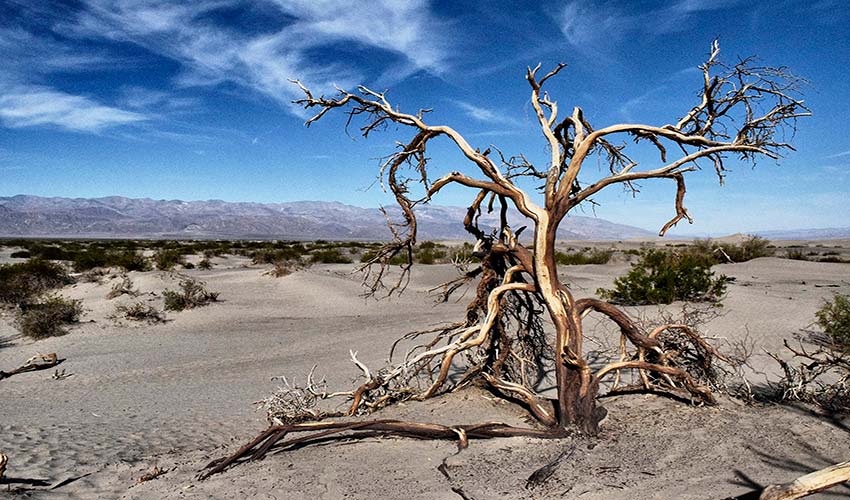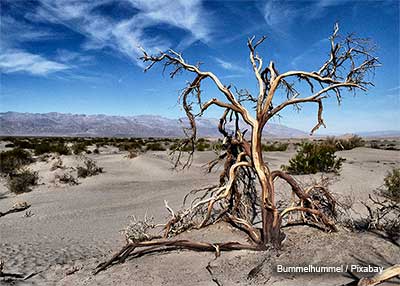FAQs about Desertification

Source: Bummelhummel en Pixabay
10. What are the countries where desertification is most advanced?
Africa is the continent most affected by desertification. Then, in this order, we have Asia, Latin America, and the Caribbean, and southern Europe.
“On the African continent, more than half of the fertile lands have given way to the desert, which is progressing faster and faster. The Sahara Desert, the largest in the world, with 4,000 kilometers from east to west, and some 1,800 from north to south, advances south. It already occupies four fifths of Mauritania, north-western Mali, more than half of Chad and Sudan, Niger, Upper Volta, The Gambia, and Cape Verde. The most damaged areas also extend to the west, such as Angola, Botswana (Kalahari Desert), the Republic of South Africa and Madagascar.
In Latin America, deserts occupy a strip that runs from the Peruvian Pacific coast to the Atlantic, crossing Argentina diagonally, which makes this country have the largest desert extensions in the entire region. Despite humid tropical forests, desertification affects more than 300 million hectares in Latin America and the Caribbean (about 250 million in South America
Australia is the driest inhabited continent in the world and is considered highly and the rest in Central America and Mexico).
Asia has some 1.7 billion hectares of arid, semi-arid and sub-humid land ranging from the Mediterranean coast to the Pacific coast. The degraded areas include growing deserts in China, India, Iran, Mongolia, and Pakistan; the sand dunes of Syria, the eroded mountains of Nepal and deforestation and overgrazing in the mountainous regions of Laos. As for the number of people affected by desertification and drought, Asia ranks first on the planet.
On the European continent, the so-called Northern Mediterranean group, made up of Spain, Portugal, Italy, Turkey, and Greece, makes up one of the four areas determined by the United Nations convention as affected by desertification”. Text and data Ministry of Foreign Affairs of Spain.
vulnerable to desertification and land degradation. Record droughts, followed by recent heat waves and devastating fires, are the product of global warming in the opinion of many experts. The truth is that the CO2 emissions – the gas that contributes to the greenhouse effect – per inhabitant are among the highest in the world. Most of the emissions come from the energy sector that primarily depends on the incineration of coal to produce electricity. Such emissions are forecast to continue to rise as there are no mitigation plans. If the global warming trend continues, parts of Australia could suffer from permanent drought. BBC.





